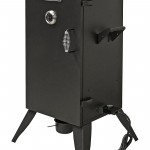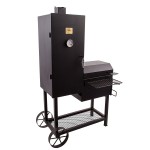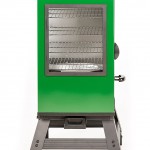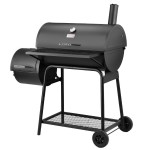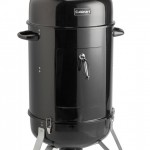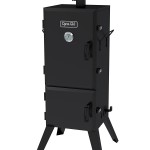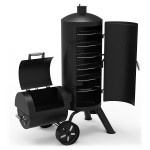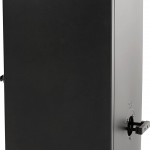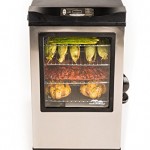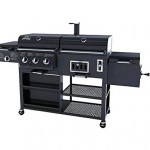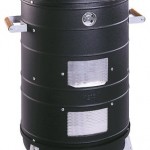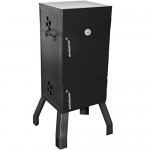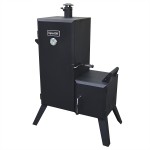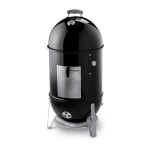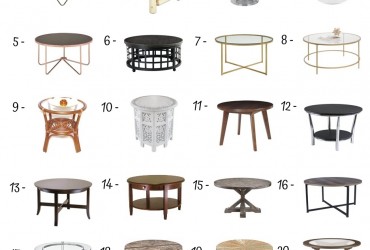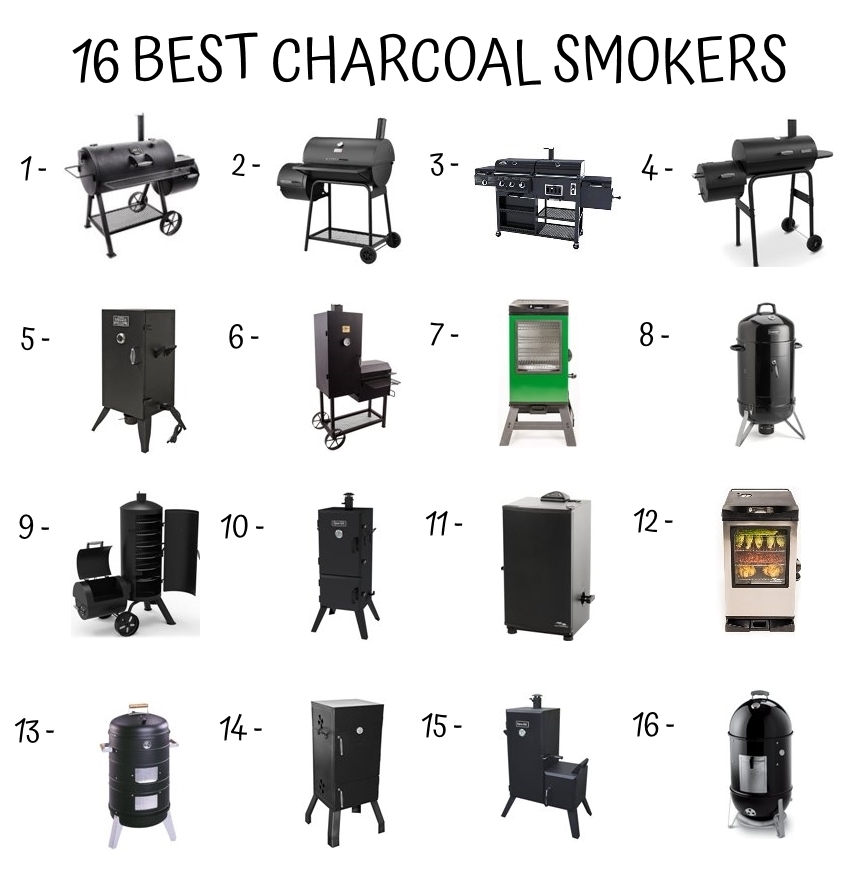
So which charcoal smokers is worth your hard-earned dough? This list is organized from lowest price to highest.
1) Oklahoma Joe’s Highland Reverse Flow Smoker | 2) Royal Gourmet Charcoal Grill with Offset Smoker | 3) Smoke Hollow 4-in-1 LP Gas Charcoal Smoker Searing BBQ Grill | 4) Char-Broil American Gourmet Offset Smoker | 5) Smoke Hollow 30162E 30-Inch Electric Smoker | 6) Char-Broil Oklahoma Joe’s Bandera Smoker and Grill | 7) Masterbuilt 20077116 4-Rack Digital Electric Smoker | 8) Cuisinart COS-118 Vertical 18″ Charcoal Smoker | 9) Dyna-Glo Signature Series DGSS1382VCS-D Offset Charcoal Smoker & Grill | 10) Dyna-Glo DGX780BDC-D 36″ Vertical Charcoal Smoker | 11) Masterbuilt 20071117 30″ Digital Electric Smoker | 12) Masterbuilt 20077615 Digital Electric Smoker | 13) Meco 5031 Charcoal Combo Water Smoker | 14) Masterbuilt 20060516 Vertical Charcoal Smoker | 15) Dyna-Glo DGO1176BDC-D Charcoal Offset Smoker | 16) Weber 721001 Smokey Mountain Charcoal Smoker |
“Stick burners” (offset barrel smokers) may give you the bragging rights, not to mention smoker envy. But if you’re just starting out with smoking, you’d do well to consider a water smoker—sometimes called a bullet smoker. Shaped like an upright bullet (hence the nickname), the water smoker is simple to operate, but serious enough for competition cooks, who often employ these hard-working cookers in multiple units.
The water smoker has a small footprint (about the size of a kettle grill)—an advantage for people with limited deck or patio space. The unique design and thermodynamics almost guarantee a consistent temperature of 225 to 250 degrees. One of the key attributes of this smoker—the water pan—keeps food moist, even after 8 or 10 hours of smoking. And the tri-part construction makes it easy to add charcoal and wood to the fire and access the meat.
The typical water smoker looks like the Star Wars robot R2D2. It has three sections:
- The firebox: a metal bowl on legs with a grate at the bottom to hold the charcoal and a perforated metal collar to corral it.
- The water chamber: a large cylindrical mid-section with an access door in the front for adding charcoal or wood and a deep water bowl positioned between the fire at the bottom and the cook chamber.
- The cook chamber: this starts above the water bowl and extends to the top section, with wire grates to hold the food and a dome-shaped lid to hold in the heat and smoke.
Much of the water smoker’s appeal is ease of use. You light charcoal in a chimney starter and pile the embers in the charcoal ring at the bottom. You place the center section on top, filling the metal bowl with water, beer, cider, or other liquid.
The food goes on wire racks over the water bowl (place lean foods, like turkey, on the bottom rack, so richer foods, like shoulders or ribs, can baste them with dripping fat). Add wood chips or chunks to the coals and adjust the vents on the bottom and top (start with the former wide open) to obtain your desired temperature—225 to 250 degrees for traditional barbecue.
Check the temperature every half hour or so. (Hopefully, your water smoker came with a reliable built-in thermometer. If not, insert the probe of an oven thermometer in one of the vent holes.)
If the smoker is running too hot, close the bottom vent(s) and most of the top vent(s). Or add cool water (or even ice cubes) to the water pan. If you still can’t bring the temperature down, remove some of the charcoal with tongs. (Next time, start with less fuel.) If the smoker runs too cool, open the vents wide—more oxygen equals a hotter fire—or add a few additional lumps of charcoal through the access door.
You’ll need to replenish the charcoal and wood chips once an hour, and check to make sure there are at least 2 inches of liquid in the water pan.
Read the manufacturer’s directions on seasoning your smoker before you use it to cook for the first time. With some models, you’ll want to burn off manufacturing grease. In my experience, a new unit runs hotter until it has been broken in because the shiny-bright interior surfaces reflect heat to the core of the smoker. A couple of smoke sessions will coat the inside with a non-reflective patina of soot.
What distinguishes the water smoker from other models is its reliance on moisture. You don’t have to fill the water pan with liquid, but doing so will not only hydrate the smoking environment, but go a long way toward helping you maintain a consistent smoking temperature.
The filled water pan provides a barrier between the charcoal fire and the food—a best-case scenario for low and slow cooking. And you can pump up the flavor by augmenting the water with beer, wine, cider, onions, carrots, celery, garlic, and/or herbs.
Moisture is particularly important during long smokes. Justin Fourton, who with his wife Diane owns the wildly popular Pecan Lodge in Dallas, explains how the meats in his pits lose up to 45 percent of their weight during smoking. For a 600-pound load of brisket, that’s more than 200 pounds of water in the pit (the remaining shrinkage comes off as fat).
Note: There are times when you don’t want to add liquid to the water pan—if you want crisp skin on a smoked chicken, for example, or you want to cook meats like pork loin or duck at a higher temperature. Without liquid to tame the heat of the charcoal fire, temperatures in the smoker can reach 300 to 350 degrees or more.
